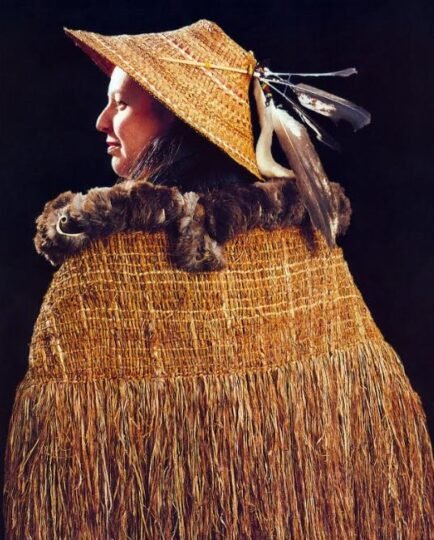I was very poor. I knew nothing about who I was, the rich culture that I descended from. I barely knew my relatives, and I was lost. For the first 13 years of my life, the government told me that I was not Skwxwu7mesh because my mother married a non-Indian. And yet somehow, through the divine wisdom of Our Ancestors, I have come back home to the land, to her secrets and mysteries that have only begun to reveal themselves.

As an adult, I relearned how to play in the mud, get my hands dirty, run around the forest, and swim in the ocean. I have found a narrow channel that provided teachings that connect US ALL to the beginning of time – the way that it really must have been for almost all of our Peoples – for at some point, we must have all descended from hunters and gatherers. At some point in time, we had to hunt for food, clothing, warmth, sustenance. We also needed to gather for food, medicine, clothing, warmth, fibre, and survival/thrival.
I was mostly raised off reserve. So when I moved home to my community in my 20’s, it took me a while to feel that sense of belonging. But it did not take me long to discover the beauty of Skwxwu7mesh people – in their love, kindness and generosity. The ways that people helped each other; shared their cultural teachings; and the wealth embedded in the Skwxwu7mesh language. I could no longer imagine my life without my community, my people, my language – because this is at the heart of the gatherer. What would be the purpose of gathering if there was no one to share it with?

Twenty years and three children later, I have become an emerging Salish Gatherer. I use the term “emerging” because I am not truly independent of modern society yet. I am not immune from the WANT or the HUNGER of things. But I am waking up from a long sleep. And in this moment of awakening – I have started to treasure the knowledge of those who walked the land, long before I was born. Those people who had the wisdom to be able to hunt the Mountain Goat and become a Mountain Goat Hunter. And the hands of the women who could spin the wool and our landscape into something that would become wearable and dance-able.
I came from humble beginnings, but learned how to remove the mountain goat wool from the hide; how to prepare Mountain Goat fat; how to cook and savour the taste of wild meat; how to carve the horns to make jewellery; and how to be grateful for the life that was given so that I could be nourished. I prayed. Asked the Mountain Goat to become my teacher, for much knowledge had been lost. In return, I promised to be patient – so that I could re-learn well and so that nothing would be missed. It took some time to realize that the Mountain Goats would become my teachers. I would follow them. Watch them. Learn their patterns.
Spirit also became my teacher and would show me the way in my dreams. Sometimes, I could tap back into generational memories that were brought forward by the children who were descendants of hunters and weavers. They would remember the plant that was used by their grandmother to make a natural dye – or they would remember their Ta7a (grandmother) using a bucket of snow to clean the Mountain Goat Wool. Every memory mattered because this influenced how I understood our WORLD.
The path of our Skwxwu7mesh Ancestors was not easy, but it was magical and filled with brilliant colours. IF we want our children to value the land, rivers, oceans, mountains, animals, and plants – then we must remind them of the blessings that we receive. We must teach our children the meaning of wenaxws (respect) for all things. As a mother, I have done my best to raise my kids with a sense of what it means to belong to the land as a Skwxwu7mesh human being.
My little “gatherers” have made me so proud as I witnessed one daughter find her first Mountain Goat shed last year. And my son, who always finds his favourite place in the forest to be curled up in a tree hammock with a good book. And then my other daughter and niece, who were dancing on the rooftop of my truck this year while I gathered some medicine. They know that they are home when we are in the mountains. And it is for this reason that I continue to seek the pathway of a Salish Gatherer.
Sesemiya Tracy Williams is Manager of Language and Cultural Affairs Department, Squamish Nation. She is well known for her basketry and traditional cedar clothing.

